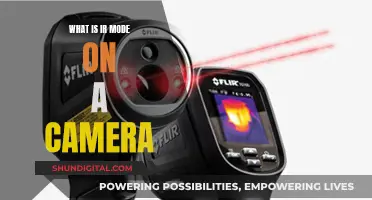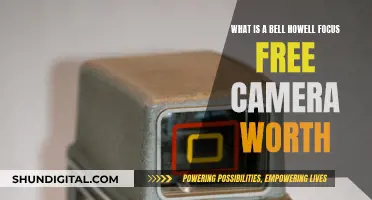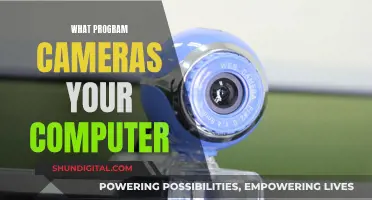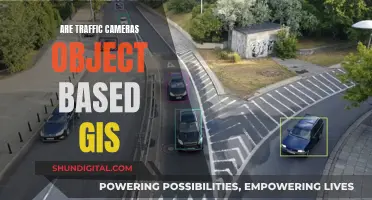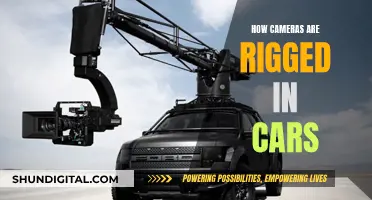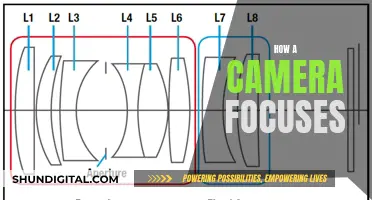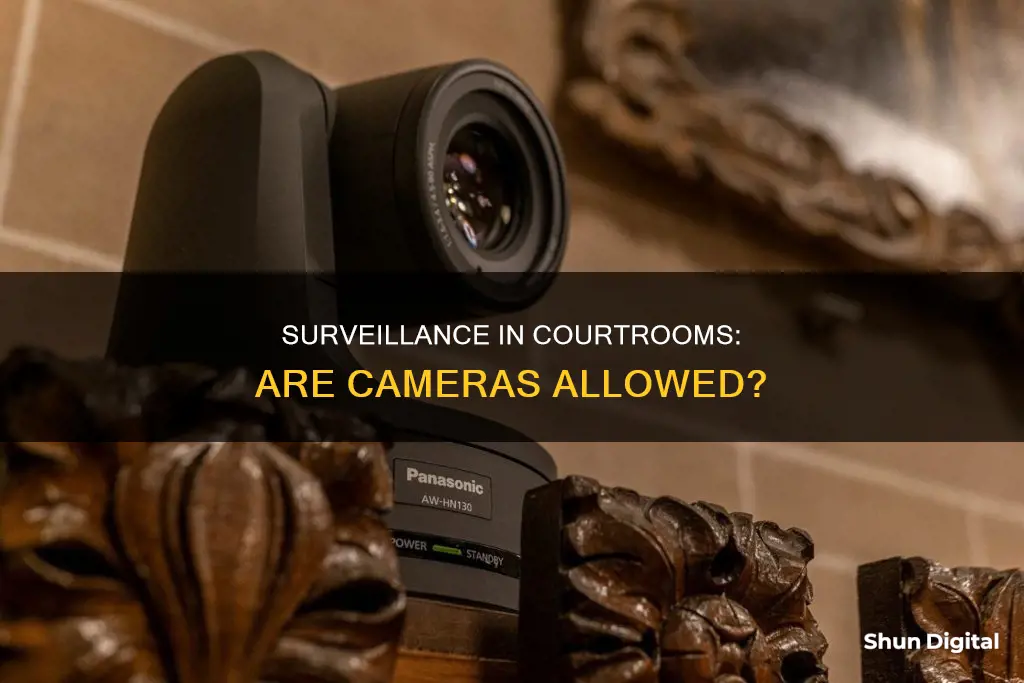
The presence of surveillance cameras in courtrooms is a highly debated topic. While some argue that it serves as a valuable tool for ensuring security and accountability, others express concerns about potential violations of the defendant's rights and the impact on the judicial process. Courtrooms across the United States have security cameras installed, capturing not only the courtroom itself but also security checkpoints, entrances, and the outside of the building. This measure aims to provide protection and surveillance for everyone inside, helping to identify individuals involved in disruptions and bringing them to justice. However, the use of cameras in courtrooms has sparked discussions about the potential influence on witnesses, judges, lawyers, and the jury, as well as the risk of sensationalizing cases and violating the defendant's right to an impartial jury.
| Characteristics | Values |
|---|---|
| Surveillance in courtrooms | Surveillance is used in courtrooms across the United States |
| Reasons for surveillance | Security, protection, identification, evidence collection, and to ensure smooth court proceedings |
| Types of cameras | FishEye, DVRs, NVRs, IP cameras, HD cameras |
| Camera features | 360-degree view, live time panning, zooming, and viewing on mobile devices |
| Camera placement | Inside courtrooms, security checkpoints, entrances, and outside buildings |
| Admissibility of footage | Depends on image clarity, time stamping, availability, and chain of custody |
| Federal rules | Federal Rule of Criminal Procedure 53 prohibits media coverage and photography during criminal proceedings |
| State rules | 47 states allow television cameras in trial and/or appellate courts; Indiana, Mississippi, South Dakota, and DC ban cameras |
What You'll Learn
- Surveillance cameras are used in courtrooms for security and evidence-gathering purposes
- They can help identify individuals involved in serious disruptions and bring them to justice
- The use of cameras in courtrooms is a widely debated topic due to its impacts on court cases
- US states allow television cameras in trial and/or appellate courts
- There are specific criteria for video footage to be admissible in court, including image clarity, timestamps, and chain of custody

Surveillance cameras are used in courtrooms for security and evidence-gathering purposes
The use of surveillance cameras in courtrooms is a widely debated topic due to its potential impacts on court cases. While some argue that it serves as a tool for entertainment and education, others believe that it could negatively affect those involved in life-changing court cases. One of the main concerns is the potential violation of the defendant's Sixth Amendment rights, which establish the right to an impartial jury. The presence of cameras in the courtroom may also cause public backlash if the defendant acts or fails to act in a certain way on camera.
However, proponents of courtroom surveillance argue that it helps to keep the justice system accountable and allows Americans to understand how court trials operate. Additionally, the First Amendment grants the public a right to know what goes on in a courtroom, and the Sixth Amendment guarantees the criminal defendant a public trial, which television audiences are argued to be a part of.
To address security concerns, some courthouses have implemented the FishEye camera system. This system is low-profile and unobtrusive, allowing for 360-degree visibility without altering the appearance of the courtroom. The footage from these cameras can be accessed on computers, mobile devices, and can be easily duplicated.
To ensure that video evidence is admissible in court, several criteria must be met. These include image clarity, accurate time stamping, availability of footage, and documentation of the chain of custody. By meeting these requirements, video evidence can play a crucial role in solving crimes and seeking justice.
Maximizing Camera Battery Life: Tips and Tricks
You may want to see also

They can help identify individuals involved in serious disruptions and bring them to justice
Security is a daily concern in courthouses and courtrooms across the nation. The smooth operation of court proceedings depends on keeping disruptions to a minimum. When serious disruptions occur, such as fights, stabbings, or shootings, security cameras can play a crucial role in identifying the individuals involved and ensuring they are brought to justice.
High-definition surveillance systems, such as the FishEye camera, offer a low-profile and unobtrusive solution for courthouses. This type of camera can capture 360-degree views, allowing onsite court staff to pan and zoom in real time within the live images. With this technology, staff can quickly identify individuals involved in disruptions and take appropriate action.
In addition to courtroom cameras, courthouses also utilize security cameras at checkpoints and entrances to ensure that everyone entering the building is captured on camera. Cameras are also placed on the exterior of the buildings to ensure comprehensive coverage of all areas. These cameras can be monitored in a security command and control center, enabling staff to respond promptly to any incidents.
The placement of cameras in natural approaches to the courthouse, at controlled entrances, and in public waiting areas further enhances security. This allows for the observation of individuals entering the building and the monitoring of public corridors and sensitive areas. Overall, the use of security cameras in courthouses provides an important tool for identifying and apprehending individuals involved in serious disruptions, helping to maintain the safety and integrity of the judicial process.
By leveraging the capabilities of modern surveillance technology, such as the FishEye camera, courthouses can effectively identify and bring to justice those who disrupt proceedings or engage in criminal activities within their premises. This not only ensures the safety of courthouse staff, judges, and the public but also reinforces the credibility and effectiveness of the justice system as a whole.
Surveillance Cameras: Crime Deterrent or Privacy Concern?
You may want to see also

The use of cameras in courtrooms is a widely debated topic due to its impacts on court cases
One of the main arguments in favour of cameras in courtrooms is the public's right to know. The First Amendment guarantees the public's right to know what goes on in a courtroom, and the Sixth Amendment guarantees a public trial for criminal defendants. Cameras in courtrooms allow millions of viewers across the nation to watch notorious criminal cases and form their own opinions. Additionally, proponents of courtroom cameras argue that they promote transparency and accountability in the justice system.
However, there are also valid concerns about the potential negative impacts of cameras in courtrooms. One of the main arguments against their use is the potential for distortion and sensationalism. Cameras may influence witnesses to alter their stories to appeal to the television audience, or lawyers to play to the camera, distracting from the seriousness of the proceedings. Additionally, the presence of cameras may intimidate some witnesses and jurors, affecting their testimony and decision-making. There is also a concern that television publicity may influence the jury's verdict, leading to a biased outcome.
The use of cameras in courtrooms has evolved over time, with technological advancements making them less intrusive. As of March 2016, the US Judicial Committee established guidelines for cameras in trial courts, allowing judges to authorize broadcasting, televising, recording, or photography under certain circumstances. These guidelines aim to balance the public's right to know with the need to maintain the integrity of the judicial process.
The impact of cameras in courtrooms extends beyond the courtroom itself. Video surveillance systems have become a critical tool in solving crimes and seeking justice. According to the U.S. Department of Justice’s Bureau of Justice Assistance, an estimated 80% of litigated crimes involve video evidence. However, it is important to note that simply having video evidence does not guarantee its admissibility in court. Factors such as image clarity, time stamping, availability of footage, and chain of custody play a crucial role in determining the admissibility of video evidence.
The Anatomy of Camera Apertures: Materials and Functionality
You may want to see also

47 US states allow television cameras in trial and/or appellate courts
In the US, photography and broadcasting are permitted in some courtrooms but not in others. 47 US states allow television cameras in trial and/or appellate courts. The use of media during courtroom proceedings is a highly contested issue. Some argue that it makes a mockery of the judicial system, while others claim that it is important for government institutions to be shown to the public. There are also concerns that the presentation and consideration of evidence may be affected by the presence of cameras influencing the behaviour of court participants.
Federal Rule of Criminal Procedure 53 prohibits electronic media coverage of criminal proceedings in federal courts. However, some federal courtrooms experimented with cameras from 1991 to 1994. The courts have been unwilling to overturn the ban on cameras, citing concerns about the expenditure of time and resources, the psychological effects on participants, and the potential for disruptions to the solemnity and dignity of the courtroom.
Despite these concerns, many famous trials, such as the O.J. Simpson murder trial, have been televised. In the wake of the O.J. trial, California Governor Pete Wilson announced his opposition to televised trials and requested a reinstatement of the ban on media coverage of criminal trials. However, others have argued that the Simpson case was an anomaly and not representative of the everyday concerns surrounding media coverage of the criminal justice system.
In 1996, the Judicial Conference authorized each court of appeals to decide for itself whether to permit photography and television coverage of appellate arguments, and some courts have since adopted rules and guidelines to allow camera coverage. Additionally, the Sunshine in the Courtroom Act, introduced by Charles Grassley, would authorize judges to permit the photographing, recording, broadcasting, or televising of court proceedings. As of 2023, the three district courts in the Ninth Circuit are continuing a pilot program that allows cameras in civil proceedings.
Dash Cam Power: Staying Charged and Ready
You may want to see also

There are specific criteria for video footage to be admissible in court, including image clarity, timestamps, and chain of custody
Video evidence is a pivotal piece of evidence in courtrooms, with an estimated 80% of litigated crimes involving video evidence. However, there are specific criteria that must be met for video footage to be admissible in court.
Firstly, the footage must be relevant to the case, supporting or undermining the truth of any point at issue in the legal proceedings. It must also be authentic, accurately representing its subject matter and not misleading the jury. For example, in a personal injury case, footage should truthfully represent the conditions of the accident site. To prove authenticity, a witness may be required to verify the origin and integrity of the video.
Secondly, the video must be obtained legally and must not violate any privacy laws. Evidence obtained unlawfully or infringing on someone's reasonable expectation of privacy may be deemed inadmissible.
Thirdly, the integrity of the video evidence must be maintained. This includes preserving the original footage, ensuring it is unaltered, and adhering to the chain of custody standards. The chain of custody provides proof of the video's integrity by documenting who has had access to and handled the footage.
Lastly, the video must be of sufficient quality and clarity to be admissible. This is especially important if the footage is being used for identification purposes, as it must show the person in question without a reasonable doubt.
In conclusion, while video evidence is a powerful tool in courtrooms, it must meet specific criteria, including image clarity, timestamps, and chain of custody, to be admissible and influence the outcome of a case.
Focusing Your Fed 5C: A Guide to Sharp Shots
You may want to see also
Frequently asked questions
Yes, courtrooms have surveillance cameras for security and to aid in criminal investigations.
Courtroom surveillance cameras can help identify individuals involved in serious disruptions, such as fights, stabbings, or shootings, and bring them to justice. They also provide protection and surveillance to everyone inside the courtroom.
Some argue that courtroom surveillance cameras can have negative impacts on court cases. The presence of cameras may distract the attention of judges, lawyers, and other court personnel, and influence participants in the proceeding to act in a certain way for the camera, unduly influencing the administration of justice.


